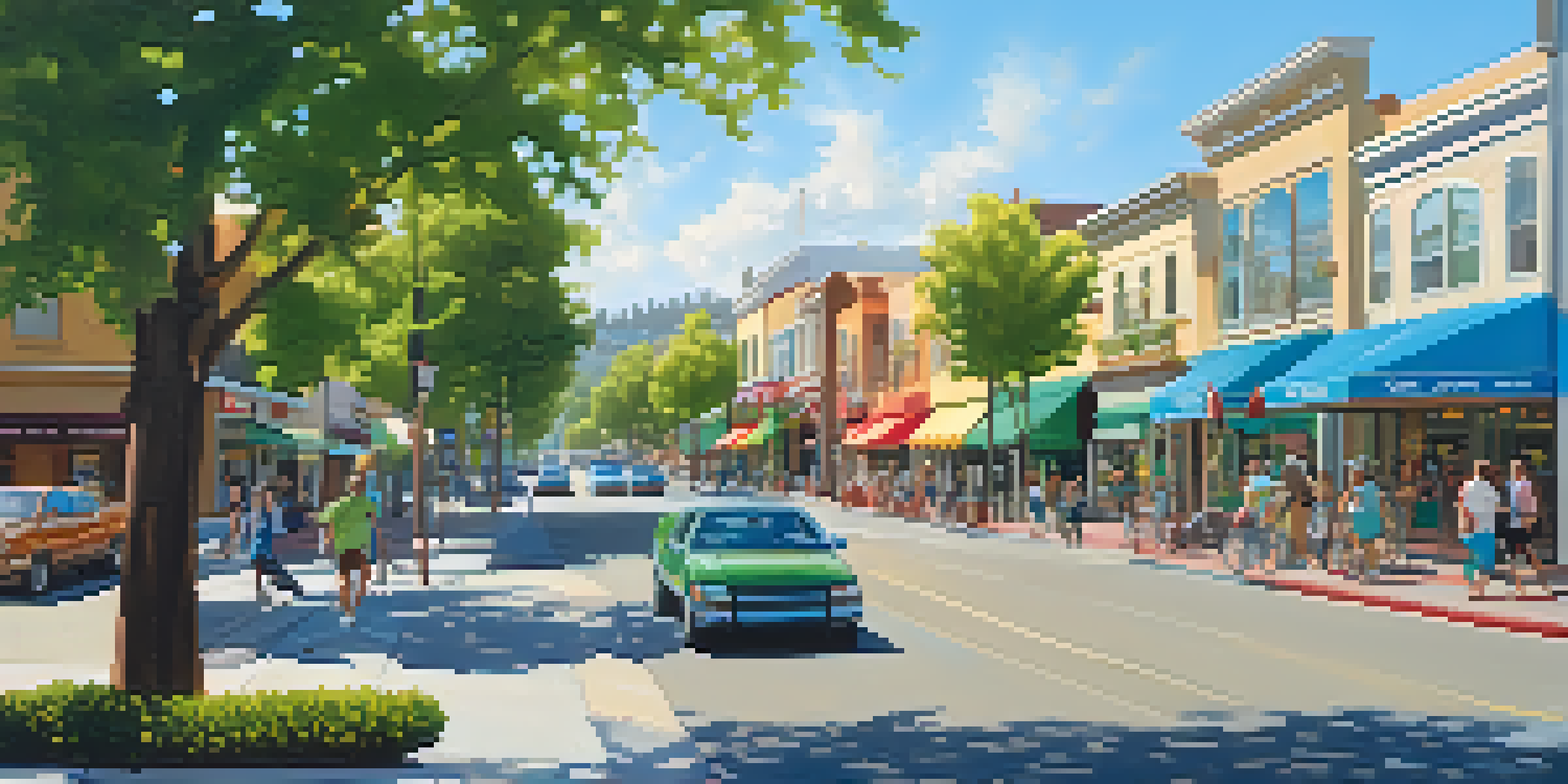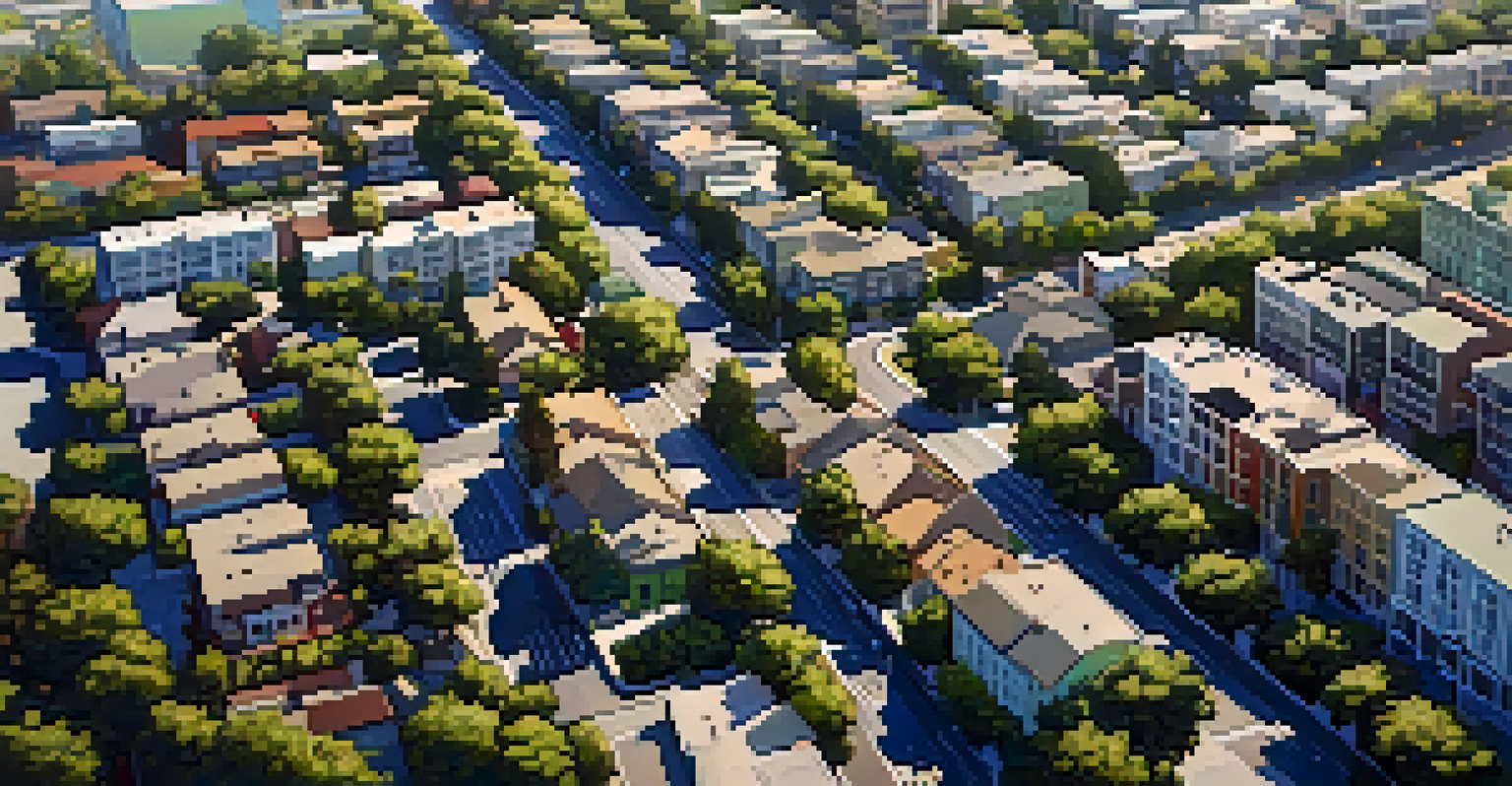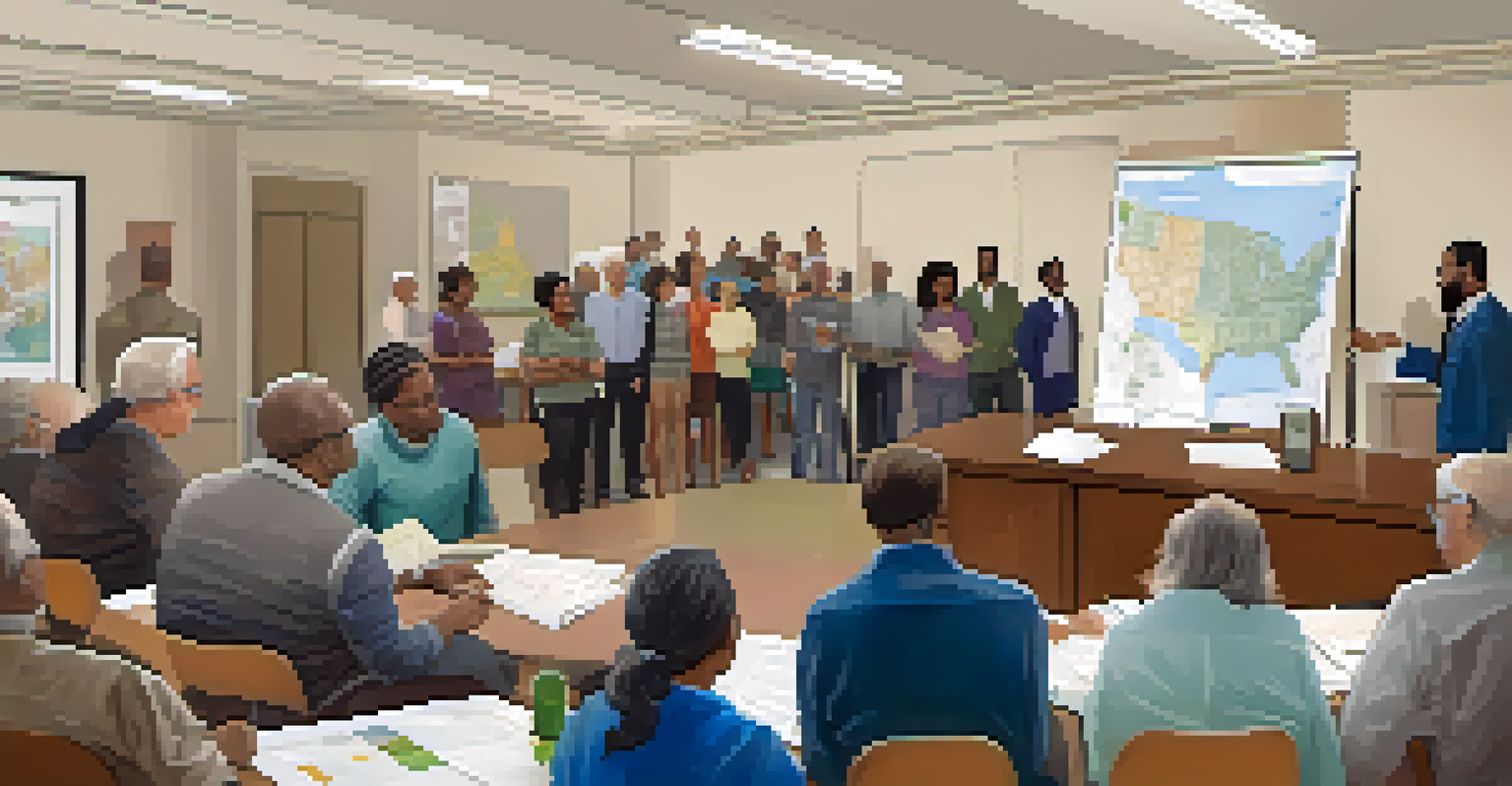The Importance of Zoning in Redwood City's Housing Policies

What is Zoning and Why Does It Matter?
Zoning refers to the laws that dictate how land can be used in specific areas. It plays a crucial role in urban planning, ensuring that residential, commercial, and industrial spaces are well-organized. By regulating these areas, cities can promote safety, environmental sustainability, and community well-being.
Zoning is not just a tool for managing land use; it's a framework for building community.
In Redwood City, zoning helps to manage the growth and development of the city as it continues to evolve. It allows city planners to create neighborhoods that are not only functional but also pleasant to live in. This organization can prevent conflicts between different land uses, such as keeping heavy industry away from quiet residential zones.
Moreover, zoning laws can influence the types of housing available in a community. For instance, if an area is zoned for single-family homes only, it limits the potential for diverse housing options that could accommodate a range of incomes and family sizes. Thus, understanding zoning is key to grasping the broader picture of housing policies.
The Role of Zoning in Housing Affordability
One of the pressing issues in Redwood City is housing affordability. Zoning policies significantly impact this by determining how much housing can be built and in what format. For example, if zoning regulations favor single-family homes, it may restrict the development of more affordable multi-family units.

When zoning laws are too restrictive, it can lead to a shortage of housing options, driving prices up and making it harder for residents to find affordable housing. This is especially concerning in rapidly growing cities like Redwood City, where demand often outpaces supply.
Zoning Shapes Community Development
Zoning laws significantly influence the organization and character of neighborhoods, impacting everything from housing types to local amenities.
By revisiting and potentially revising zoning regulations, Redwood City can encourage the development of a variety of housing types. This could lead to more affordable options, helping to accommodate a diverse population and enhancing community inclusivity.
Zoning and Sustainable Development Practices
Sustainability is a key consideration in modern urban planning, and zoning plays a significant role in promoting environmentally friendly development. In Redwood City, zoning can encourage practices such as mixed-use developments that combine residential, commercial, and recreational spaces. This not only reduces the need for long commutes but also fosters a sense of community.
Good zoning laws encourage diverse housing options and promote sustainable growth, ensuring that cities thrive in harmony with their residents.
Moreover, effective zoning can help preserve green spaces and promote the use of public transportation. By strategically placing residential areas near transit hubs, the city can reduce car dependency and lower carbon emissions. This aligns with broader goals of sustainability and environmental responsibility.
Incorporating sustainable practices into zoning laws is not just beneficial for the environment; it also enhances the quality of life for residents. A well-planned community that prioritizes sustainability can lead to healthier lifestyles and stronger community bonds.
Zoning Laws and Community Input
Community involvement is vital in shaping zoning laws, as these regulations directly affect residents' lives. In Redwood City, public hearings and community meetings provide platforms for residents to voice their opinions and concerns about proposed zoning changes. This participatory process ensures that the needs and desires of the community are considered.
Engaging residents in discussions about zoning can also foster a sense of ownership and responsibility towards their community. When people feel heard, they are more likely to support initiatives that benefit the area, leading to a cohesive and thriving community.
Zoning Impacts Housing Affordability
Restrictive zoning regulations can limit housing options, driving up prices and affecting the availability of affordable housing in rapidly growing cities like Redwood City.
Ultimately, incorporating community input into zoning decisions can lead to more equitable and inclusive housing policies. This collaborative effort can bridge gaps between different groups and ensure that various voices are represented in the planning process.
The Impact of Zoning on Neighborhood Development
Zoning not only determines the types of buildings allowed but also influences the overall character and development of neighborhoods. In Redwood City, the zoning map is a reflection of the city’s vision for growth and development. For example, areas designated for high-density housing are likely to attract more businesses and amenities, creating vibrant neighborhoods.
Additionally, zoning can help maintain the historical and cultural significance of certain areas. By protecting landmarks and promoting compatible development, the city can ensure that new construction complements the existing character of the neighborhood, making it more appealing for both residents and visitors.
This careful balance between growth and preservation is essential for fostering community pride and identity. When neighborhoods are thoughtfully developed with zoning in mind, they become not just places to live, but vibrant hubs of activity and connection.
Zoning Variances and Their Significance
Zoning variances are exceptions to the established zoning laws, allowing for flexibility in specific cases. In Redwood City, these variances can be crucial for accommodating unique projects that might not fit neatly into existing zoning categories. For instance, a developer may seek a variance to build a mixed-use structure in a primarily residential area, thus bringing more services to the community.
While variances can promote innovation and adaptability, they also require careful consideration and public input. Ensuring that variances are granted fairly helps maintain trust between the city officials and the community. It’s essential for residents to feel that their concerns are addressed, especially when it comes to developments that may impact their quality of life.
Community Input is Essential in Zoning
Engaging residents in the zoning process fosters a sense of ownership and ensures that community needs are considered in urban planning decisions.
In essence, zoning variances offer a balancing act between adhering to regulations and embracing new opportunities for growth. When used effectively, they can enhance community development while respecting the established zoning framework.
Future Trends in Zoning and Housing Policies
As Redwood City continues to grow, the future of zoning and housing policies will likely evolve. Trends such as remote work and increased interest in sustainable living are already influencing how cities approach urban planning. For instance, there may be a shift towards more flexible zoning regulations that accommodate a mix of residential and commercial uses, reflecting changing lifestyles.
Moreover, technology is playing an increasingly important role in zoning and housing policies. Tools such as geographic information systems (GIS) can help planners analyze data and visualize the implications of different zoning scenarios. This tech-driven approach can lead to more informed decision-making and efficient urban planning.

In conclusion, staying ahead of these trends is vital for Redwood City to meet the needs of its residents. By adapting zoning laws to reflect current and future demands, the city can ensure sustainable growth and a vibrant community for years to come.